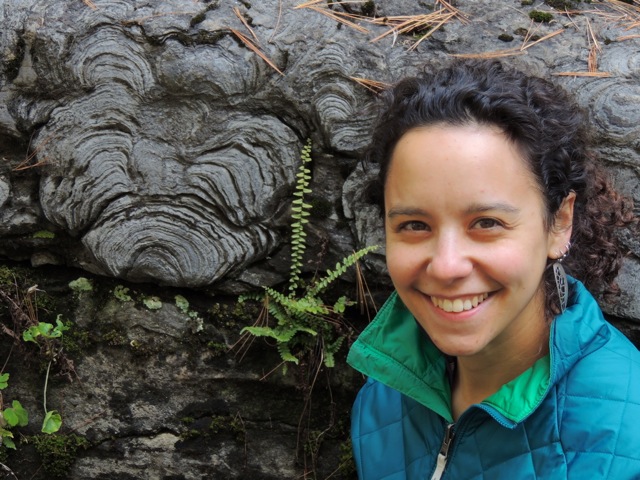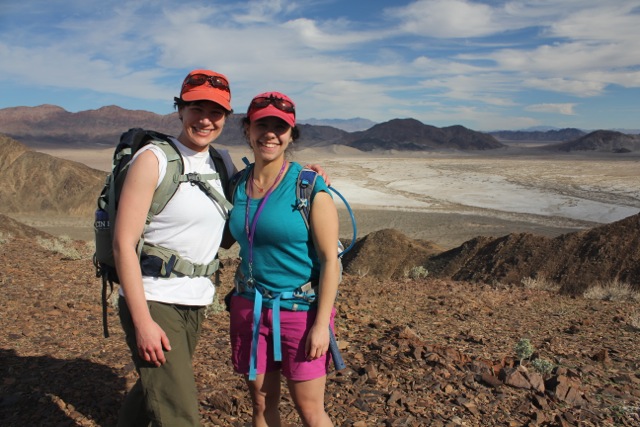
PhD from Harvard University, BA from Cornell University
Field sites past & present: British Colombia, Yukon, Newfoundland, Namibia, Australia, Death Valley (CA), and, last but not least, upstate New York.
Dr. Kirk Johnson, paleobotanist and author of Cruising the Fossil Freeway, explains paleontology as time traveling with a shovel. It’s a beautiful analogy, because when paleontologists are doing fieldwork, we spend about 30% of our time observing the modern landscape, and the other 70% imagining what it would have looked like thousands, millions, or even billions of years ago. Today, we’re going to travel to really, really deep time with Dr. Phoebe Cohen.
Phoebe studies fossil amoebas – tiny, single-celled animals – that lived in the Proterozoic Eon 2500 – 543 million years ago. You’re perhaps thinking, “Seriously? Amoebas? Can those even fossilize? Why would anyone study amoebas when you could be studying dinosaurs, mammals, turtles, reef creatures, or even insects?” Well, go back 543 million years, and none of those things that you think of as animals existed. That thing next to Phoebe in her photograph is the dominant life form of the Proterozoic: stacked mats of cyanobacteria. The multicellular animals that did exist lacked hard parts. Then, suddenly (I define “suddenly” as less than 20 million years – compared 4.5 billion years of Earth’s history), around 520 million years ago, fossils of nearly every major group of animals appear: sponges, corals, molluscs, brachiopods, arthropods, echnidorms, and even representatives of our own phyla, the chordates.
This Cambrian Explosion was one of the thorns in Darwin’s side as he was puzzling out his treatise of gradual evolution by natural selection. How on Earth could animals have evolved so quickly? What was going on before this sudden appearance of so many different animals with hard parts? Questions like these are at the heart of Phoebe’s research. To get at the roots of animal origins and the evolution and radiation of eukaryotes (life composed of cells with nuclei – e.g., you, plants, mushrooms, and even protists) in general, you need to study the Proterozoic and the tiny amoebas. Phoebe and her colleagues are also working to describe the environmental conditions that served as the backdrop for early animal evolution. During the Late Proterozoic, oxygen levels increased, significant changes in ocean chemistry occurred, and Earth completely froze over at least twice!
You may be wondering what exactly Phoebe does in the field. Well, first off, she does her best to avoid being mauled by grizzly bears (check out http://www.youtube.com/watch?v=dAvl1_1pF-g for Phoebe’s recollection of a particularly harrowing experience in the Yukon). Then, she collects rocks that are likely to be rich in microscopic fossils, takes them back to her lab, and uses acid to dissolve away the rock and leave behind the tiny micro-organisms. Unlike many of us who know in the field whether we have collected something groundbreaking, it is months later, sitting at the microscope, that Phoebe learns just how successful her fieldwork was.

For more information on Dr. Phoebe Cohen, please visit: http://sites.williams.edu/pac3/
Good grief! It is amazing what I am learning from this blog. The idea of field work without any immediate gratification is mind-blowing.